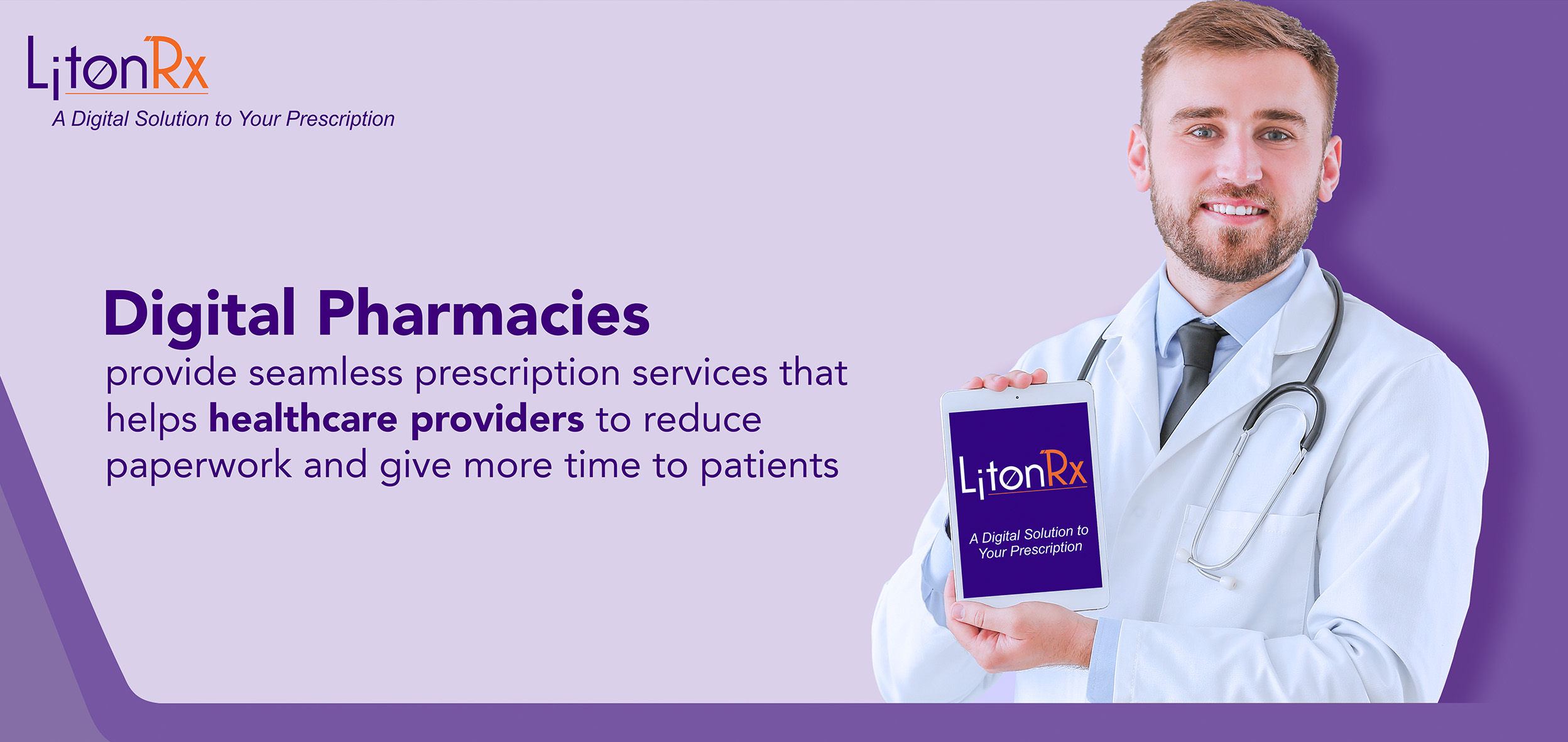How Digital Pharmacies Help Healthcare Providers

The popularity of digital pharmacies and e-prescriptions are rapidly growing, especially as telehealth has become the norm for many due to COVID-19. These online methods for prescribing and filling prescriptions provide an easy-to-use, convenient design that is not only beneficial for patients, but also offers multiple advantages for physicians as well.
By e-prescribing –i.e., using software to digitally send your patients’ prescriptions to a pharmacy– healthcare provider scan improve their organizational workflow, run more efficiently, care for more patients, and save time and money. Digital pharmacies allow doctors and hospitals to run a more efficient and organized facility, while protecting their patients’ health.
Advantages of Digital Pharmacies for Providers:
Digital pharmacies and e-prescriptions are helping healthcare providers in multiple ways, helping ease the work of doctors and significantly cutting the costs of pharmaceutical. Here are some examples of how:
1. Protecting Patient Privacy. By sending prescriptions to a digital pharmacy, patients’ personal information is better protected. E-prescribing eliminates the risk of a patient losing a prescription, as well as theft or forgery of a handwritten prescription.
2. Reducing Risk of Errors. Limiting contact strictly between the healthcare provider and the pharmacy eliminates numerous risks, like overdose or incorrectly filling a prescription due to misreading handwriting.
3. Providing Access to Prescription History. With traditional hand-written prescriptions, adverse drug reactions (ADEs) can be easily overlooked without the readily available access to patient information. Electronic prescribing allows doctors and pharmacies to see the patient’s complete health record, including allergies, drug interactions, and a patient’s health history. The system will automatically detect and alert about any pharmaceutical conflicts or other concerns. Having access to prescription history also saves doctors time during checkups.
4. Ensuring Patients Take Medications as Prescribed. With e-pharmacy technology, doctors can check and make sure that patients picked up their medicine as prescribed. They can also see if a prescription was refilled as needed.
5. Filling Prescriptions Faster. With digital pharmacies, software handles patient electronic health records. Automated systems read the prescription and check for availability much faster than a pharmacist can. Also, because the prescription is typed in, pharmacists do not have to call in to physicians’ offices as often with questions due to not being able to read the handwritten prescription.
6. Reducing Operational Costs. While it’s expensive to hirea pharmaceutical team to provide 24/7 support, a digital pharmacy can provide remote consultations. By collaborating with a digital pharmacy, hospitals can save money and increase revenue by seeing more patients.
7. Speeding Insurance Payments. Because digital pharmacies more efficiently manage data, it is easier for insurance companies to approve and pay bills faster. Doctors and their teams have more time to do their jobs without manually rechecking handwritten prescriptions. This also helps doctors and their staff to focus on patient care and retention.
E-prescriptions and digital pharmacies are not only more convenient for patients – eliminating the need to drop a prescription by their pharmacy – they are more efficient and cost effective for providers as well. They provide simple, seamless prescription services that allow provider teams to get away from some of their mounds of paperwork and spend more time on what matters – their patients.

